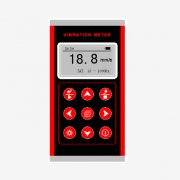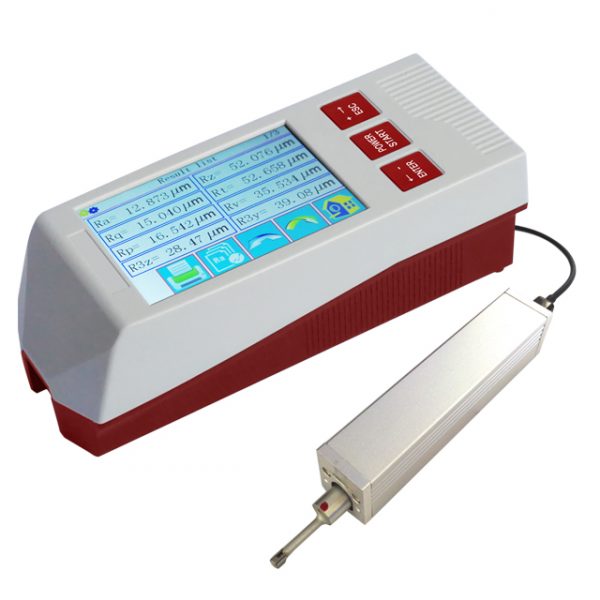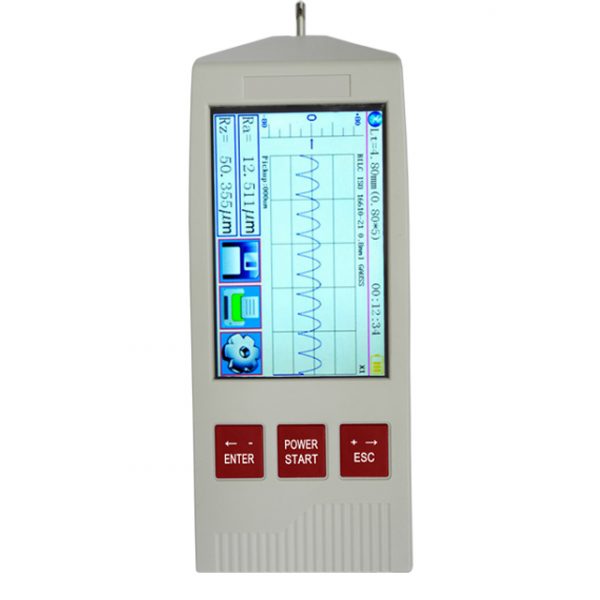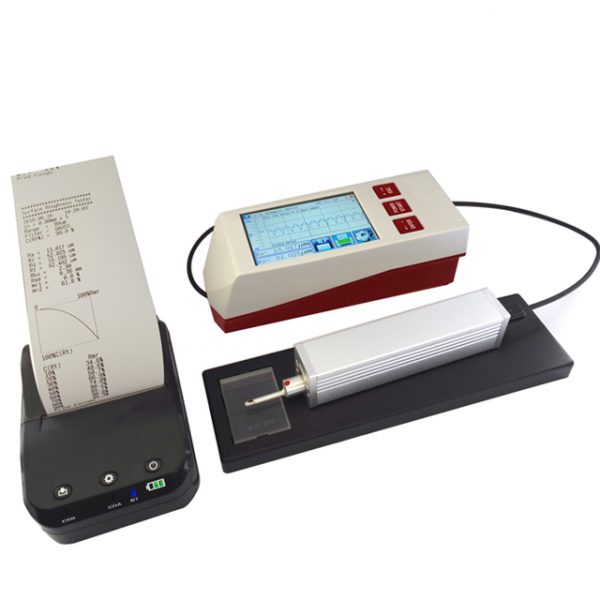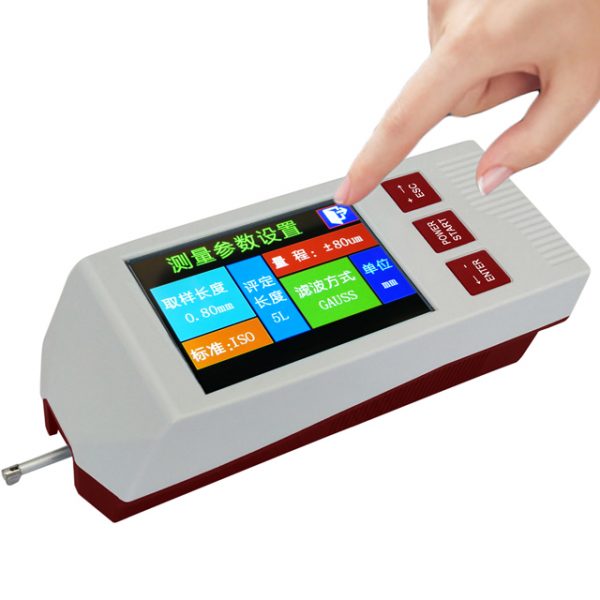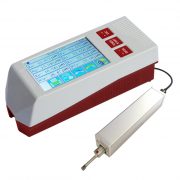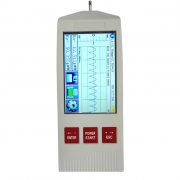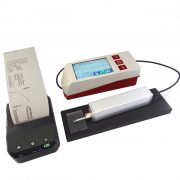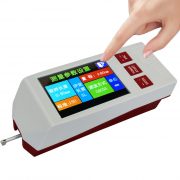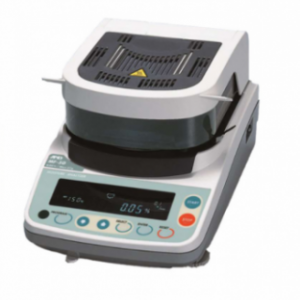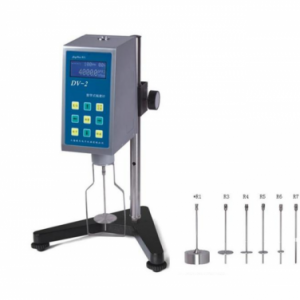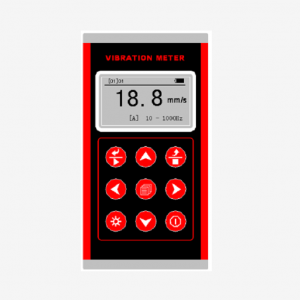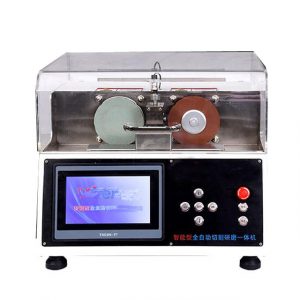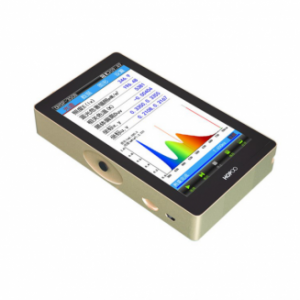- Descrizione
- Inchiesta
LS-1601 Surface Roughness Tester Touched Screen
Applicazione
Surface Roughness Tester LS-1601 is a high accuracy instrument for measuring surface roughness. It can be used on variety of machining parts and operates on various surfaces, not only flat but also outer cone, outer cylinder, curved, pinholes, grooves, recesses grooves and axle etc.
Il LS-1601 allows surface roughness measurement both on metal and non-metal workpieces. especially for measurement on large and heavy workpiece, assembly line, on site. It is suitable for machining and manufacturing, controllo di qualità, inspection departments.
The LS-1601 is a Non Destructive Testing instrument, damage won’t caused to testing piece.
LS-1601 Surface Roughness Tester Touched Screen
MAIN FEATURE
- Mechatronics and ergonomics design, small size, peso leggero, easy to operation
- The stylus drive unit can be stored within the main unit for standard measurement, or separated from the display unit by using the supplied cable which allows more flexible measurement in any orientation. The driver can be separated and reattached in one simple step
- 5 inches color graphic LCDtouch screen, WYSIWYG, it includes a backlight for visibility in dark environments
- It displays all parameterand graphic
- The LS-1601 can be operated usingthe buttons or the touch screen
- Measurement range up to 320μm
- Large internal memory: 100 item of raw data and curves can be stored
- The LS-1601 provides Bluetooth Capability , support wireless connection with printer
- Built-in lithium-ion rechargeable battery and controlling circuit, high capacity, no memory effect
- There is remaining charge indicator, charging hint
- It works over 50 hours while fully charged.
- Lingua: cinese e inglese
- DSP chip control and data processing, ad alta velocità, low power consumption
- Real-time clock setting and display for easy data recording and storage
- With auto sleep, auto power off, power-saving features
- Reliable circuit and software design to preventing the motor stuck
- All parameters or any of the parameters which set by users can be printed LS-1601 Surface Roughness Tester Touched ScreenTECHNICAL DATA
Measuring rang The Z axis (verticale) 320Acciaio inossidabile e alluminio anodizzato sono i materiali di costruzione preferiti (-160µm~160µm) , 12600μin (-6300μin~+6300μin) The X axis (Trasversale) 17.5mm(0.69 inch) Risoluzione the Z axis (verticale) 0.002μm/±20μm, 0.004μm/±40μm 0.008μm/±80μm, 0.02μm/±160μm
Parametro Ra Rz Rq Rt Rc Rp Rv R3z R3y Rz(JIS) Ry Rs Rsk Rku Rmax Rsm Rmr RPc Rk Rpk Rvk Mr1 Mr2
Graphic Rmr curve, Roughness curve, Primary Profile Filtro RC,PC-RC,Gauss,D-P The sampling length(lr) 0.25, 0.8, 2.5mm Assessment length(ln) I coefficienti di attrito dei cateteri e dei tubi di alimentazione nasale contro la pelle umana influenzano direttamente la sensazione di benessere del pazienten= lr×n n=1~5 Sensore Principio di misura Inductance Stylus tip Diamond, 90 cone angle, 5μmR Force Measuring force<4mN, Skid force<400mN Probe head lega dura, skid radius of curvature: 40mm Traversing speed lr=0.25, Vt=0.135mm/s lr=0.8, Vt=0. 5~199,9 mm/s (valore effettivo) lr=2. 5, Vt=1mm/s Return Vt=1mm/s Precision 0.001micron Tolleranza Not more than ±(5nm+10%A) A stands for the standard specimen RA value( tolerance not more±10% ) Residual Profile Not more than 0.010μm Ripetibilità not more than 3% Alimentazione elettrica Built-in Lithium ion battery 3200mAh, Charger :DC5V Outline dimension Main unit: 158×55×52mm drive unit: 23×27×115mm Weight(main unit) Around 380g Zoom of height adapter 40mm working Environment I coefficienti di attrito dei cateteri e dei tubi di alimentazione nasale contro la pelle umana influenzano direttamente la sensazione di benessere del paziente: – 20℃ ~ 40 ℃ I coefficienti di attrito dei cateteri e dei tubi di alimentazione nasale contro la pelle umana influenzano direttamente la sensazione di benessere del paziente: < 90% RH
Store and Transportation I coefficienti di attrito dei cateteri e dei tubi di alimentazione nasale contro la pelle umana influenzano direttamente la sensazione di benessere del paziente: – 40℃ ~ 60℃ I coefficienti di attrito dei cateteri e dei tubi di alimentazione nasale contro la pelle umana influenzano direttamente la sensazione di benessere del paziente: < 90% RH
standard ISO4287, ANSI B46.1, DIN4768, JIS B601 Optional accessory Magnetic Base, height gauge adapter, curved sensor, small hole sensor, deep groove sensor, pinhole sensor, Extending Rod, Right Angle Rod, mini printer, 200mm platform, 300mm marble platform, software, mobile APP

